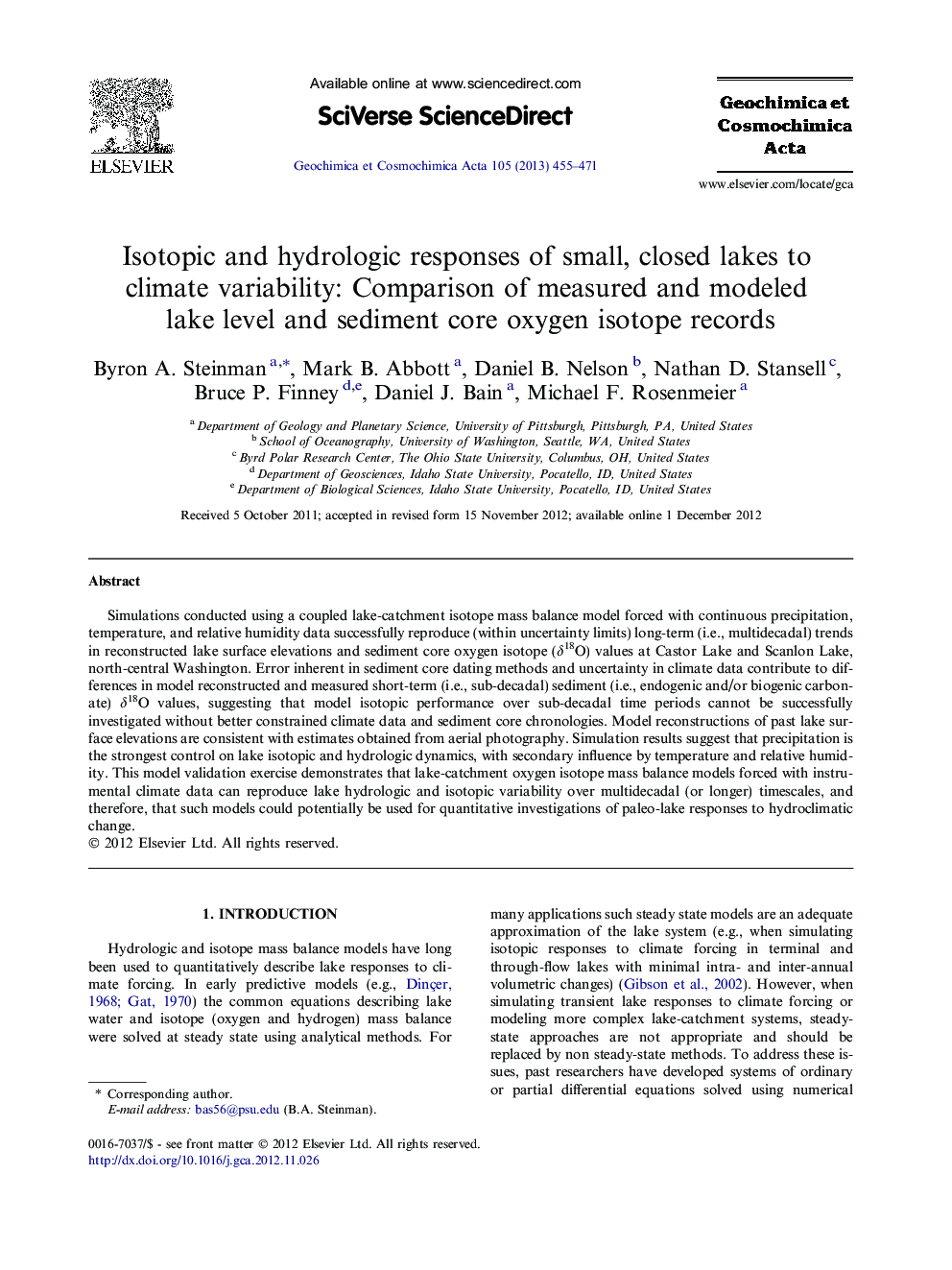| Article ID | Journal | Published Year | Pages | File Type |
|---|---|---|---|---|
| 4702563 | Geochimica et Cosmochimica Acta | 2013 | 17 Pages |
Simulations conducted using a coupled lake-catchment isotope mass balance model forced with continuous precipitation, temperature, and relative humidity data successfully reproduce (within uncertainty limits) long-term (i.e., multidecadal) trends in reconstructed lake surface elevations and sediment core oxygen isotope (δ18O) values at Castor Lake and Scanlon Lake, north-central Washington. Error inherent in sediment core dating methods and uncertainty in climate data contribute to differences in model reconstructed and measured short-term (i.e., sub-decadal) sediment (i.e., endogenic and/or biogenic carbonate) δ18O values, suggesting that model isotopic performance over sub-decadal time periods cannot be successfully investigated without better constrained climate data and sediment core chronologies. Model reconstructions of past lake surface elevations are consistent with estimates obtained from aerial photography. Simulation results suggest that precipitation is the strongest control on lake isotopic and hydrologic dynamics, with secondary influence by temperature and relative humidity. This model validation exercise demonstrates that lake-catchment oxygen isotope mass balance models forced with instrumental climate data can reproduce lake hydrologic and isotopic variability over multidecadal (or longer) timescales, and therefore, that such models could potentially be used for quantitative investigations of paleo-lake responses to hydroclimatic change.
